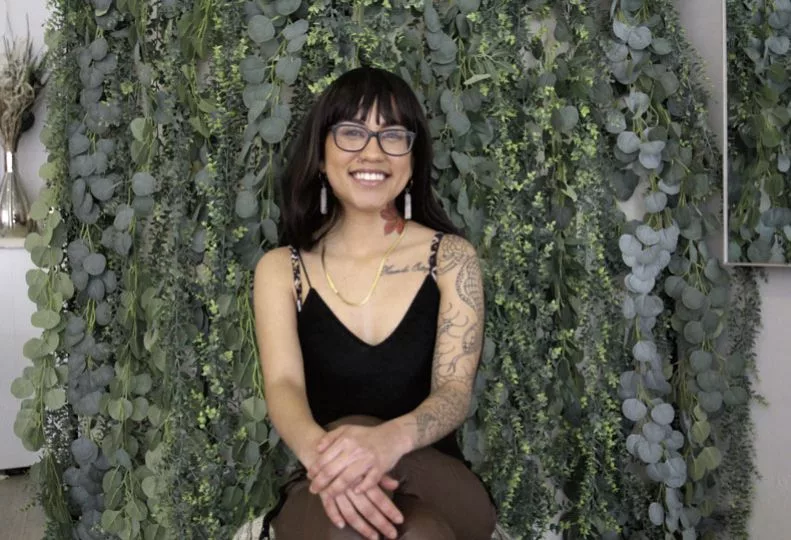Chicana Esthetics caters to multicultural skin
Studio owner: Diverse clients need specialized cosmetic treatments

Chicana Esthetics LLC has seen strong growth in its number of clients since launching in November as a cosmetic skin studio focused on skin health issues for people of Native American, Asian, African American, and Latino backgrounds.
Abigail Palacios, founder and owner of Chicana Esthetics, says the response from the Spokane community has been positive.
“My clients walk in and first thing they say is there’s a place here in Spokane tailored for me and my skin color,” she says.
Chicana Esthetics is located at 1915 E. Sprague, in Spokane’s East Central neighborhood, in 100 square feet of leased space inside Divina Beauty Bar LLC.
Since opening in November, Palacios says her clientele has jumped to 70 from about 10 clients. She declines to share projected annual revenue but says it is growing. Palacios is the sole employee and says she will hire an employee this year to keep up with client demand.
Palacios says the main skin issues she focuses on correcting are hyperpigmentation, which is the overproduction of melanin in the skin that causes dark spots, and hypopigmentation, the underproduction of melanin that causes discoloration.
Palacios says that the main differences between white skin and skin of color can be significant when treating certain conditions.
For instance, African American skin can have about 20 cell layers within the uppermost layer of skin, compared to about 16 cell layers in white skin. Hispanic, Asian, and Native American people fall somewhere within that spectrum, she says. The extra layers often provide more protection, however, Palacios says she notices her clients often have impaired skin barriers often to using products that aren’t specifically geared for people of color and often dehydrate the skin causing rashes, itchiness, and flakiness.
Another main difference with skin of color is the way in which melanin works, she says. Melanin produces pigmentation that gives color to skin and eyes and provides some protection from damage by ultraviolet light.
People of color have a higher likelihood of overproduction or underproduction of melanin that results in dark spots or discoloration of the skin.
In addition, Palacios says that there is a misconception within Latino, African American, Asian, and Native American cultures that melanin fully protects skin from sun damage, and therefore many people forego applying sunscreen unless its summertime.
“Even though our melanin in our skin protects us, it’s still not enough to protect you from skin cancers, skin conditions, and sun damage,” says Palacios. “You’re still at risk. It’s still completely crucial for people of color to apply (sunscreen).”
Palacios graduated a year ago from Glen Dow Academy as a master esthetician. The program is 40 weeks long, or 1,200 hours, and teaches students to use lasers, light frequency, ultrasound, and plasma frequencies. The course also prepares students for advanced client assessment, such as whether specific treatment, pre-treatment, and post-treatment procedures are appropriate.
Palacios, who is of Latino background, says she began getting facials and different treatments around town and noticed her results were opposite of what a good facial should look like.
“It’s not because they did something wrong,” she says. “To be fair, when I went to beauty school, we weren’t taught things we should have been taught about all skin types.”
Palacios says that when entering the skin care industry, she noticed a hesitancy from instructors of performing treatments on people color because of the high risk of hyperpigmentation, burns, and discoloration.
After graduating from Glen Dow Academy, Palacios trained with JoElle Lee, an esthetician who specializes in multicultural skin care and was Michelle Obama’s personal esthetician while she was First Lady. JoElle Lee offers online training courses that teach estheticians how to identify and treat skin conditions most commonly found in people of color, and the safest way to administer laser and chemical peel treatments.
Palacios says that after going through her training, she learned how to administer products safely and properly to all skin types. She says skin of color requires more pre-care and post-care to avoid creating an overproduction of melanin, scarring, or other conditions.
Palacios offers programs tailored to a person’s level of skin care experience, and each is completed over the course of three to six months. Palacios says it takes about three cell cycles, which occur within a period of three to six months, for skin to adjust to new products and for clients to see results.
The programs include hydrating facials and chemical peels, which Palacios says are key to correcting hyperpigmentation and sun damage.
In addition to the programs, Chicana Esthetics also offers a range of independent treatments, including facials, and more advanced treatments, such as chemical peels, dermaplaning treatments, microdermabrasion treatments, and other offerings.
Related Articles
Related Products


_c.webp?t=1763626051)

_web.webp?t=1764835652)